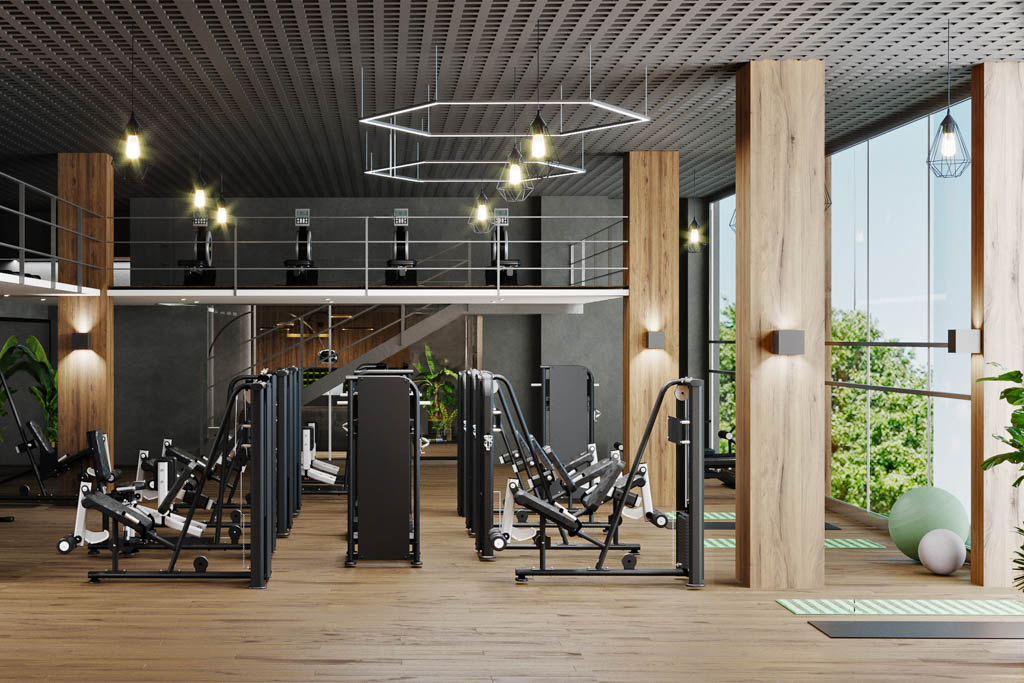Do you need to offer a “social wellness experience” at your gym?
What about high-end services and swanky studios?
Altea Active, a new luxury facility in Vancouver, Canada, will open soon, complete with anti-gravity training, a mediation lounge, turf, a cycle studio, strength and cardio machines galore, Olympic-lifting platforms, a hot-yoga studio, a sauna and steam cabin, a kids area, a small-group training studio and more.
So do you need all that stuff—or even some of it—at your gym?

As well-funded, high-end facilities open and change the definition of “gym” for some, it can be tempting to think you need to offer more at your fitness business.
Take a virtual tour of Altea Active here and tell me it doesn’t make you at least consider buying a few new machines, laying a strip of turf and creating a lounge with coffee service.
I get it: Those things look irresistibly cool to gym owners. Allow a wave of FOMO to wash over yourself as you imagine the smell of new turf and the hiss of pneumatic resistance machines.
But before you start tossing bean-bag chairs and arcade games into your “Destress Chamber,” remember two things:
1. Every square foot of space must generate as much revenue as possible.
2. The services you offer must solve problems for your ideal clients.
Revenue Per Square Foot and Problem Solving
When I ran a functional fitness gym a few years ago, we had 6,000 square feet of space. A vacant office and front lobby ate up about 750 square feet of that total. I left the office vacant for years for no good reason, and I filled the lobby with couches and a giant truck tire that became a cool coffee table.
This was unwise. That space—about 13 percent of my total area—generated no revenue at all for years.
Eventually, with the guidance of a mentor, we decided to rent out the vacant office to a physiotherapist, and we experimented with yoga classes in the lobby for a time. Just as COVID hit in 2020, I was making plans to get rid of the couches and use a big chunk of the lobby as a PT studio or on-ramp area. I had done the math, and I knew this plan would add money to our bottom line.
The lesson is that space is expensive, so you must use it to generate revenue. Unused, underused or misused space is costing you money. With that in mind, you must answer a key question whenever you’re making plans for your facility:
“Will [insert idea here] generate more revenue for my business by solving problems for my clients?”
If you run the numbers and determine an athletic training area with turf will help your large group of aspiring college athletes improve their results in preseason physical testing, you might make an investment that will add value to your business and generate a clear return.
If a large number of your very best clients all tell you they and many of their friends would jump at the opportunity for personal-training sessions in a small, private studio away from your group area, you might throw up a wall and carve out some space.
But if you think about putting in a wine bar because it “feels high end,” pass.
Or if you want to experiment with saunas and ice baths because they’re “trending right now,” hit pause and determine if your clients would actually pay for access to that stuff.
Here’s an inner dialogue a gym owner might have when considering changes:
Question: “Will adding six Olympic-lifting platforms generate more revenue for my business by solving problems for my clients?”
Answer: “No. None of my best clients have asked for platforms, and most aren’t interested in weightlifting at all. I’m applying the “if you build it, they will come” mentality to this project, and that’s a bad way to run a gym.”
Another example:
Question: “Will adding a cycling studio generate more revenue for my business by solving problems for my clients?”
Answer: “Probably not. This is an area of interest for me, but my clients don’t care about spin classes. I can help them accomplish their fitness goals with the equipment I already have.”
One more:
Question: “Will a kids studio generate more revenue for my business by solving problems for my clients?”
Answer: “Yes. I know the majority of my members have kids, and some of my very best clients have told me they struggle to get to the gym because of child care. A kids studio would allow these parents to work out at the same time as their kids, and they’d be thrilled if their kids put down their screens and learned to love fitness. In off hours, I can use this room for on-ramps and PT, which will generate more revenue.”
Make Solid Plans Based on Data
I’m not throwing shade on high-end services, special studios and cool equipment. I’m intrigued by that stuff, too, and it can work in certain facilities.
I’m just here to remind you to review your business model carefully whenever you consider making big changes to your facility.
Review your model twice if you got your ideas after suffering FOMO when another gym announced its plans.
Better yet, run any idea past an experienced, objective mentor who can help you maximize ROI.

